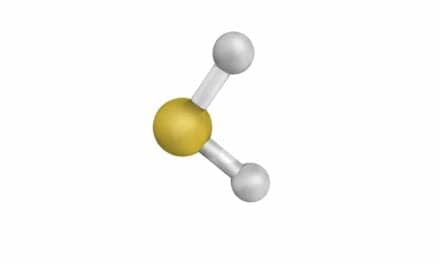Bedtime drug candidate relieved pain by targeting fibromyalgia’s characteristic “non-restorative sleep.”
People with fibromyalgia pain are closer to a new option for treatment that targets their characteristically poor sleep quality.
Tonix Pharmaceuticals reported positive study results for its sleep-quality targeted therapy in late December, showing its drug candidate Tonmya reduced widespread pain in fibromyalgia as reported by study volunteers, a sign it could be the first in a new class of painkiller to be approved for use in fibromyalgia.
In the latest fibromyalgia phase 3 study, Tonix’s Tonmya improved fibromyalgia pain with a highly statistically significant p-value of 0.00005 on the primary endpoint which was the improvement in daily pain relative to placebo. The results also showed favorable tolerability with no unexpected side effects.
About 10 million Americans have fibromyalgia, and the majority are prescribed a medicine for the characteristic widespread pain.
It is known that the brain creates the feeling of pain. Fibromyalgia results when the brain becomes overly sensitive. The fibromyalgia brain sounds the pain alarm in response to sensory experiences that most healthy people ignore. Brain imaging studies have revealed that the fibromyalgia pathology activates the same parts of the brain that pain normally activates in healthy people. Consequently, the pain that fibromyalgia patients experience is real to them. It is unknown how fibromyalgia turns up the volume on brain sensitivity. It is also unknown how good sleep is able to reset the fibromyalgia brain’s over-sensitive perception.
The experimental medicine targets the characteristic sleep disturbance of fibromyalgia, called “non-restorative sleep.” People with fibromyalgia wake up feeling unrefreshed because their sleep fails to provide the restorative properties that healthy people enjoy. While targeting sleep is the novel mechanism of the new drug, it also provides a direct benefit because sleep disturbance is one of the core symptoms of fibromyalgia. In the study, Tonmya improved sleep quality relative to placebo by both the PROMIS sleep disturbance scale p = 0.0000001 and a daily sleep diary p = 0.0007.
The role of poor sleep in causing, perpetuating, or exacerbating fibromyalgia has been recognized for more than 50 years. In the 1970s, professor Harvey Moldofsky, MD, at the University of Toronto deprived undergraduates of deep sleep and found that most of them developed symptoms of fibromyalgia.
Developing drugs to target fibromyalgia’s characteristic sleep problem has been challenging. Daily bedtime Ambien (zolpidem) was studied and did not improve fibromyalgia. Intriguing results were achieved by treating fibromyalgia patients with the sleep drug Xyrem (sodium oxybate). That drug induces a profoundly deep sleep and is approved for narcolepsy. It is hard to rouse people after taking Xyrem.
While the results with Xyrem were scientifically interesting, an advisory committee to the US Food and Drug Administration (FDA) voted against approval for fibromyalgia, and the sponsor, Jazz Pharmaceuticals, decided not to pursue approval. Because of the risk of diversion for date rape, Xyrem is burdened by a complex risk evaluation and mitigation strategy program.
This history with Ambien shows that the type of sleep drug and its particular effect on sleep are important in determining whether it will be therapeutic for fibromyalgia. Tonix’s new drug candidate Tonmya improves sleep quality by blocking four receptors in the brain, each of which plays roles in disturbing sleep.
The normal function of these four receptors is to increase alertness, vigilance, or wakefulness or to sound the alarm to wake up. Consequently, when they fire during sleep, they can play pathological roles in fibromyalgia. During the time fibromyalgia patients want to sleep, these receptors can disrupt sleep quality. By blocking these receptors during sleep, Tonmya improves the quality of sleep and removes an obstacle to recovery.
Tonix’s drug, also known as TNX-102 SL, belongs to a new class of medicines for fibromyalgia. Tonmya’s active ingredient has a chemical structure with three rings, so it is called a “tricyclic.” The Tonix drug is a sublingual tablet to be taken at bedtime, designed to deliver the active ingredient into the brain during sleep and reduce its presence during wakefulness.
This is the first program pursuing a drug to improve sleep quality in fibromyalgia since 2009 that is headed to the FDA for a decision on approval. Tonix says it intends to file for approval by submitting a New Drug Application with the FDA in the second half of this year. The company expects a decision from the FDA in 2025.
“If and when Tonmya is approved, it will offer a new first-line treatment option for fibromyalgia patients,” says Tonix CEO Seth Lederman, MD, in a release. “Ultimately, we believe Tonmya will also be an option for patients who need pain relief but can’t tolerate or don’t respond to the currently marketed drugs for fibromyalgia. Because Tonmya targets sleep quality, we believe it’s a major step forward in both the treatment of fibromyalgia and in understanding the roles of non-restorative sleep in causing or exacerbating fibromyalgia.”
With the current FDA-approved drugs, fibromyalgia patients face tough choices: take Cymbala (duloxetine) from Eli Lilly or Savella (milnacipran) from Abbvie Inc and risk insomnia or take Lyrica (pregabalin) from Pfizer Inc and risk increased fatigue, according to a release from Tonix. Tonmya demonstrated improved pain, sleep, and fatigue in fibromyalgia patients in its confirmatory phase 3 study.
New Jersey-based Tonix studied Tonmya in three late-stage, or phase 3, trials that enrolled more than 1,400 subjects with fibromyalgia. Tonix also studied TNX-102 SL in three phase 3 trials that enrolled more than 1,200 subjects with post-traumatic stress disorder, which has a different sleep disturbance.
Axsome plans to file a New Drug Application this quarter for esreboxetine for the management of fibromyalgia. Esreboxetine has a mechanism similar to Cymbalta and Savella but is more specific for norepinephrine reuptake.
Photo 121396219 © Samwordley | Dreamstime.com





